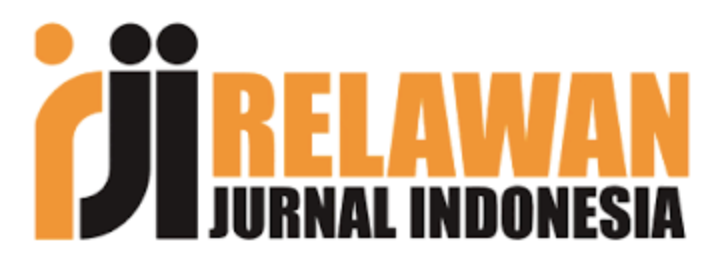PENENTUAN KADAR AMILOSA DARI UMBI TALAS SAFIRA (Colocasia esculenta Schoot var. antiquorum) MENGGUNAKAN METODE SPEKTOFOTOMETRI UV-Vis
Keywords:
Amilosa, Spektrofotometer UV-Vis, Umbi Talas SafiraAbstract
Kadar amilosa yang terdapat pada pati dapat mempengaruhi sifat fisikokimia dari pati. Pati dengan kadar amilosa yang relatif cukup banyak dapat dimanfaatkan untuk formulasi obat. Pati memiliki rasio amilosa dan amilopektin yang beragam yang sangat penting sebagai parameter dalam pemilihan sumber pati yang akan digunakan dalam industri. Sehingga pengembangan metode analisis untuk penentuan rasio ini merupakan hal yang sangat menantang. Tujuan penelitian ini untuk mengetahui kadar amilosa dari umbi talas safira dengan menggunakan metode spektrofotometri UV-Vis. Proses ekstraksi pati dilakukan dengan proses pengendapan. Amilosa dapat dipisahkan dari pati berdasarkan perbedaan sifat kelarutannya dalam air panas. Rentang kurva kalibrasi yang diperoleh adalah 20-70 bpj dengan koefisien korelasi (r) = 0,99968. Metode yang digunakan mempunyai batas deteksi (LOD) adalaj 1,2202 bpj, denganbatas kuantitasi (LOQ) 4,0673 bpj dan koefisien variasi fungsi regresi 0,9038%. Hasil analisis terhadap sampel hasil isolasi dari pati talas safira dan ekstrak pati talas safira diperoleh kadar amilosa berturut-turut adalah sebesar 90,8% b/b dan 96,95% b/b. Kadar amilosa pada sampel amilosa hasil isolasi dari pati talas safira lebih rendah (90,8% b/b) dibandingkan dengan yang terkandung dalam ekstrak pati talas safira (96,97% b/b).
Downloads
References
Prana M. S., 2007, Studi pembuangan pada talas (Colocasia esculenta (L) Schoot). Biodiversitas 8 (1):6-66.
Suminarti, N.E., 2011, Paket Teknologi Budidaya Tanaman Talas (Colocasia esculenta L.) Schott var. Antiquorum ) Pada Kondisi Basah dan Kering. Disertasi. Program Pasca Sarjana, FP UB Malang.
Mastuti, endang dan Setyawardhani, Dwi Ardiana, 2010, Pengaruh Variasi Temperatur dan Konsentrasi Katalis Pada Kinetika Reaksi Hidrolisis Tepung Kulit Ketela Pohon. Ekuilibrium. Vol. 9. No. 1 : 23-27.
Kusnandar, Feri, 2010, Kimia Pangan : Komponen Makro. Dian Rakyat : Jakarta.
Kirk, R.E., and Othemer D.F., 1983, Encyclopedia of Chemical Technology. The Interscence Encyclopedia Inc. Vol. 5, New York.
Nisperos-Carriedo,1994, di dalam Krochta, 1994. Krochta, J.M., E.A. Baldwin & M.O. Nisperos-Carriedo, 1994, Edible Coating and Film to Improve Food Quality. Technomic Publishing Company. New York.
Zulfikar, R., 2008. Studi Pengaruh Tarik pada Film Plastik BOPP (Blaxial Oriented Polypropylene). Skripsi. Faluktas Teknik Universitas Indonesia Jakarta.
Swinkels, 1985, Source of Starch: Its Chemistry and Physics, in G.M.A Van Beynum dan J.A Roels (editor), Starch Conversion Technology, Marcel Dekker Inc, New York.
Whistler, R.L. and J.R. Daniel. 1985. Carbohydrates. Di dalam Food Chemistry. O. R. Fennema (ed). Marcel Dekker INC : New York.
Hawab, H.M., 2004, Pengantar Biokimia. Bayu Media Publishing : Jakarta.
Harmita, 2006, Analisa Fisikokimia. UI Press : Jakarta.
Downloads
Published
How to Cite
Issue
Section
Citation Check
License
Authors who publish in Jurnal Farmasi Galenika agree to the following terms:
This license enables reusers to distribute, remix, adapt, and build upon the material in any medium or format, so long as attribution is given to the creator. The license allows for commercial use. CC BY includes the following elements:
BY: credit must be given to the creator.
You are free to:
- Share — copy and redistribute the material in any medium or format for any purpose, even commercially.
- Adapt — remix, transform, and build upon the material for any purpose, even commercially.
- The licensor cannot revoke these freedoms as long as you follow the license terms.
Under the following terms:
- Attribution — You must give appropriate credit , provide a link to the license, and indicate if changes were made . You may do so in any reasonable manner, but not in any way that suggests the licensor endorses you or your use.
- No additional restrictions — You may not apply legal terms or technological measures that legally restrict others from doing anything the license permits.
Notices:
You do not have to comply with the license for elements of the material in the public domain or where your use is permitted by an applicable exception or limitation .
No warranties are given. The license may not give you all of the permissions necessary for your intended use. For example, other rights such as publicity, privacy, or moral rights may limit how you use the material.











